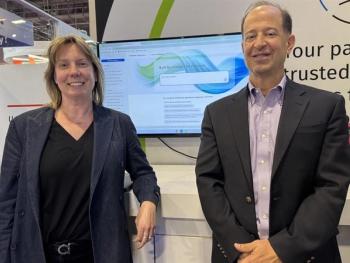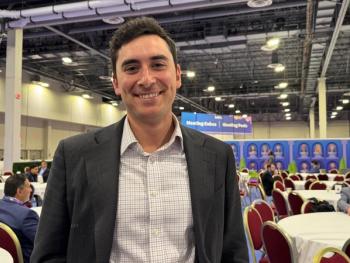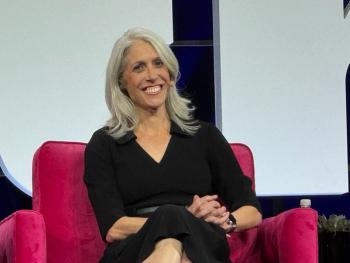
The Clinical Divide: Ridesharing, Mergers and MSK in Hindsight
Can ridesharing improve efficiency and the patient experience? Are mergers the future, or are they dragging us back into the past? Plus, updates on MSK's Paige.AI scandal a week later.
How can our financially stretched U.S. healthcare system deal with mega ambulance bills? The answer might be just a smartphone application tap away. What do mega mergers mean for the relationships between doctors and C-suite executives? The implications are huge and far-reaching, and can potentially change the entire healthcare landscape in the U.S. today.
Let's jump right in and get to the bottom lines of these controversies today.
Welcome to The Clinical Divide. I'm Dr. Kevin Campbell. I'm a Duke-trained Cardiologist and the CEO of a health data startup called PaceMate. Every week, this Healthcare Analytics News video series examines top news from medicine and health tech. I strive to bring you an in-depth analysis and a unique perspective as both a healthcare executive and as a physician in hopes of bridging the Clinical Divide.
Ridesharing and the Patient Experience
Our first story brings us to a big money waster: Ambulance rides. A recent New York Times report reinforces the fact that many patients don't need an ambulance to get to the hospital. Ambulance trips cost patients thousands of dollars and they cost the country tens of billions of dollars every year. But 30 percent of these ambulance rides are completely unnecessary.
Are ride share services like Uber and Lyft the solution? Maybe. They're convenient, they're affordable and familiar to patients and as luck has it, both companies are diving deeper into non-medical emergency transportation.They're looking at it today and continue to advance it.
Here's how C-suites and clinicians can leverage Uber and Lyft to save money across the board. First, executives can examine whether a partnership with either company would help their business model and help their patients. As we know, medicine today is very competitive, particularly in big city markets where Uber and Lyft tend to thrive.
When people miss their appointments, the bottom line and patient outcomes suffer, so executives must do their part to encourage such an arrangement. If we can get patients to the hospital or to their appointment, they're gonna do better.
Clinicians can also take a more proactive role in ensuring their patients arrive on time. We know that when patients arrive late it backs up our office flow and results in longer wait times. Workflow in a clinic is critical to success. Uber Health, for example, allows physicians to actually schedule rides for their patients. And even if a healthcare system doesn't enlist the help of Uber or Lyft, we doctors can gently remind our patients that if it's not an emergency, they can always pull up their rideshare app instead of dialing 9-1-1. This will save time and money.
Using a rideshare application may be a good way to improve attendance to the office visits and may be a great way to foster patient engagement. We all know from prior data that this improves outcomes significantly.
Merger: Baylor Scott and White & Memorial Herman Health System
For our next story, let's look at the merger between the two largest healthcare systems in Texas: Baylor Scott and White and Memorial Herman Health System announced plans this last week to join forces. This means that one mega institution will serve more than 30 counties in Texas and 73,000 patients.
They say the union will remove inefficiencies and improve care, but critics say healthcare mergers are bad for costs, not to mention these mergers can significantly limit patient choice. We all know the ACA has already resulted in only one choice of provider or insurer for many patients across the U.S., and this type of merger could make this problem much, much worse. Limiting choice is always bad.
Whatever you think, the reality is that healthcare is undergoing an intense period of mergers and acquisitions. We're seeing it everywhere. Each one of these brings its own challenges, from cybersecurity to the culture of the institution. That's why it's critical that healthcare executives and physicians work in tandem during these periods of change. If not, we're gonna see a lot more doctors retiring early, and this will mean a labor shortage and less access to care for patients. We cannot just have cases of money talking and doctors walking.
In the end, C-suites must remember that doctors care most about these business moves and how they affect their relationships with patients, and hospital leaders should care about that too. After all, what's good for patients is always, always good for business.
MSK's Paige.AI Scandal One Week Later
Let's go back to a story from last week and the MSK scandal. If we remember last week, there was a conflict of interest at Memorial Sloan Kettering Cancer Center in New York. If you recall, employees there founded an artificial intelligence startup called Paige.AI, and they got an exclusive deal to use MSK's 25 million patient tissue slides.
The Cancer Center has a stake in the startup and so do several of its leaders. At last check, it had resulted in at least one resignation and a lot of ridicule in the press, but last week, the scandal inspired more action. MSK's CEO resigned his seat on the board of Merck and another company called Charles River Laboratories. It just goes to show you: When things don't seem right, and they look a little stick and they smell a little bad, even the most powerful healthcare leaders will face fallout.
Sadly, ultimately, our patients are the ones that suffer the most.
Again, thank you for joining me for this episode of the Clinical Divide. Until next week, I'm Dr. Kevin Campbell for Healthcare Analytics News.
Get the best insights in healthcare analytics directly to your inbox
Related:








































